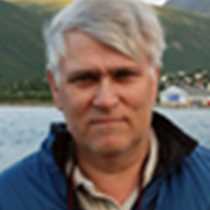Northwest Spitzbergen
The surrounding landscape and sightings are very much a function of previous human activities. In Svalbard all wildlife as late as 1970, was very much hunted to extremely low numbers. In Svalbard, Norway has shown that good active management can rapidly rebuild populations. The polar bear was protected in 1973 preceded by the walrus in 1956 and reindeer in the 1920s. The last species to make a comeback here at Svalbard was the blue whale, last hunted out in 1907 off Svalbard, and first seen again in the summer of 2006.
The human history of Svalbard applies, since Barents spotted the high peaks in the very northwest corner of Spitzbergen Island in 1596. Shortly after Barents arrival the Dutch and English whalers arrived and in less than 100 years they hunted out all Greenland whales (bowheads), and the majority of walrus. Whalers were later followed by Pomors, Russian hunters from the White Sea regions, who were replaced by Norwegian trappers and sealers from 1850 to about 1970.
Now a week sailing around Svalbard we have spotted a tremendous amount of wildlife. Today we explored the northwest corner to Spitsbergen, the largest island in the group of islands named Svalbard. First we started with a nice, but windy and cold, scenic Zodiac cruise at Smeerenburgfjorden. Here the tidal glacier was very active with plenty of bangs from smaller calving. A few bearded seals were also curious about us in the boats. The bitter cold warranted some hot refreshments, and the hotel department had lowered a chocolate boat to surprise us.
Smeerenburg was the land based whaling station at Amsterdamøya, managed by the Dutch. As we sailed out from the fjord we were able to see the site in a distance. Here we also saw the beach at Danskøya, the site the Swedish engineer and explorer Andrée and his two mates took off in July 1896 with their air balloon named Örnen (the Eagle) with the goal to fly to the North Pole. They left July 11 1896 and nothing was heard about them until August 1930, as a Norwegian expedition stopped at Kvitøya (far NE Svalbard) and found a tent. Here the three men were found frozen. It turns out their flight only lasted for about 60 hours and they never got near the Pole!
During lunch we got a slight chance to experience Swedish cuisine with marinated herring, meatballs and of course aquavit served for the hardy to taste.
After lunch we continued along the west coast, further south, and made a landing at Hamburgerbukkta, a nice lagoon surrounded by high peaky mountains with colonies of little auks (dovekies). Some of the groups hiked up over the nice moss and lichen covered topography to have a closer look at the swarms of little auk breeding in the scree slopes and under the boulders. A few pairs of arctic skuas (parasitic jaegers) had chicks and in a very distinct way blocked our route by dive bombing and forced us to deviate along our paths. In a few weeks these chicks will be on their wings and heading south to winter along the coastal areas of Southern Africa or South America.
The name Hamburgerbukkta refers to a whaling expedition made in 1642 by wealthy German traders from Hamburg. The lagoon, they thought, would be a perfect harbor, as all good protected fjords were already taken by Dutch or English whalers. The very exposed lagoon was often punched by heavy swell from the southwest and their attempt to use this as a land station failed. Maybe the grave we saw was from this period? Along the beachfront we found remains from the Norwegian trapper’s hut, a pile of wood and bricks. This was a satellite station, to the main trapper station in Magdalenafjord, used as the trappers were setting out traps for the Arctic fox.
In the lagoon we were able to add a new species of seal, harbor seal (common seal). Here on the northwestern side of Spitsbergen, only a small population exists while the closest population thrives in northern Norway and along the Kola Peninsula. Even more interesting we saw two walruses stalking the seals. Yes, walrus mainly feed on clams but a few try to catch seals.
As we were about to return from a bright blue sky and no wind outing, we heard reports over the radio: “polar bear – on the northern side of the lagoon”. Luckily almost everyone was already in the boats, as we do NOT want to encounter any bears on land at the same time as we are ashore. Heading back and the last boats were able to get a closer look at an almost greenish brown VERY hungry bear. The Inuit have a saying, “a polar bear can turn itself in to anything” and we observed that this can be true. These are by far the most dangerous polar bear to encounter on land, stranded on land far from any ice to hunt the seals.
After dinner our bridge officers took the ship back north and made a cruise through a very scenic fjord, Fuglefjorden. It is hard to keep remembering the days that have come before, as we so many new in-prints impress upon this experience hour by hour. What did we do the first day of the voyage? I guess our Video Chronicler with his video presentation is good to have. Tonight we got to see a pre-presentation after dinner.




